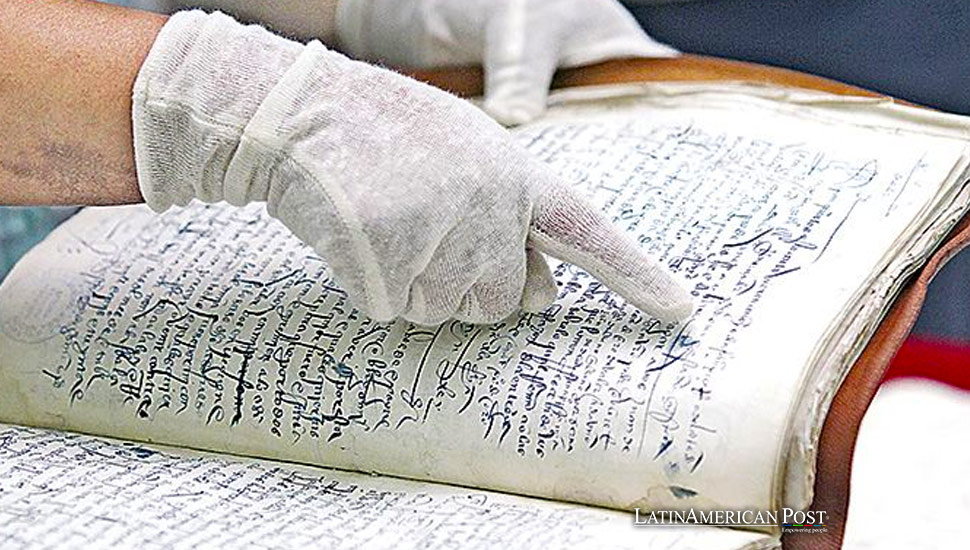Peru’s New Colonial Archive: A Modern Vault for Timeless Treasures

Peru has inaugurated a new repository for its Colonial Archive, featuring enhanced technology to preserve invaluable documents from the Viceroyalty era, including writings by Francisco Pizarro and Tupac Amaru, securing a pivotal part of the nation’s heritage.
Peru’s commitment to preserving its rich historical heritage has taken a significant leap forward with the opening of a new Colonial Archive repository. This state-of-the-art facility unveiled in Lima, safeguards documents critical to understanding the nation’s past, including the Viceroyalty period and the early Republican era. Ricardo Moreau, head of the National General Archive (AGN), and Leslie Urteaga, the Minister of Culture, spearheaded the project and marked the inauguration with a ceremony celebrating this monumental achievement.
Ensuring Document Safety
The new repository has advanced preservation technologies and modern facilities that promise better conditions for the documents and the archivists tasked with their care. “This space not only preserves the colonial memory of our country but also provides an encouraging working environment for our staff,” Minister Urteaga stated at the opening. The upgrade includes state-of-the-art fireproof doors, climate control systems to manage temperature and humidity, and enhanced security measures such as biometric access controls and surveillance cameras.
Among the treasures housed in the Colonial Archive are some of Peru’s most important historical documents. These include the earliest known reference to pisco from 1613, the Ambulant Protocol of the Spaniards from 1533 signed by Francisco Pizarro, and papers relating to notable figures like Tupac Amaru, Micaela Bastidas, and José de San Martín. The repository’s enhancements aim to ensure that these invaluable documents receive the protection they deserve, thereby extending their lifespan for future generations to study and appreciate.
The significance of the Colonial Archive extends beyond national borders, resonating throughout Latin America. The region shares a deeply intertwined history, marked by colonization, the struggle for independence, and the subsequent formation of nation-states. By preserving documents from figures like Tupac Amaru and José de San Martín, Peru contributes to a broader understanding of the forces that have shaped the entire continent. These documents are not only Peruvian treasures but are also critical pieces in the complex historical puzzle of Latin America.
Fostering Collective Memory: Role of Archives in Latin America
The importance of such archives in fostering a collective memory and historical consciousness across Latin America cannot be overstated. Similar initiatives have been undertaken in countries like Mexico and Argentina to safeguard their colonial legacies, including extensive documentation from the Spanish rule and the fight for independence. These efforts are crucial for educational purposes, providing researchers and historians with the raw materials to reconstruct historical narratives accurately.
This renewed focus on document preservation in Peru comes when the country reassesses its historical narratives. With increased interest in indigenous histories and the legacies of colonialism, the documents preserved within the Colonial Archive offer insights into the lives and struggles of those who lived through those transformative years.
Furthermore, the collaboration between Peru’s Ministry of Culture and the Judiciary, which facilitated the move of the AGN to its new home, highlights the importance of cross-institutional cooperation in heritage preservation. Such partnerships ensure cultural preservation is embedded within broader national priorities, including education, cultural identity, and international diplomacy.
Securing Latin American History
The modernization of the Colonial Archive is a testament to Peru’s dedication to preserving its historical documents, ensuring they remain accessible to current and future generations. This project sets a precedent for archival work in Latin America, emphasizing the critical role of modern technology in the stewardship of our collective past. As these documents are preserved, so is the rich tapestry of Latin American history, allowing for a deeper understanding of the region’s diverse and complex heritage.
Also read: A New Deer Species Discovered in Peru’s Forests
As Peru continues to lead by example, the hope is that more Latin American nations will follow suit, enhancing their archival facilities to protect their historical documents. This collective effort will strengthen cultural ties within the region, promoting a shared understanding and appreciation of our interconnected histories. Through such initiatives, Latin America can ensure its historical treasures are safeguarded against the ravages of time and environmental threats, securing a legacy that will enlighten and inspire future generations.





